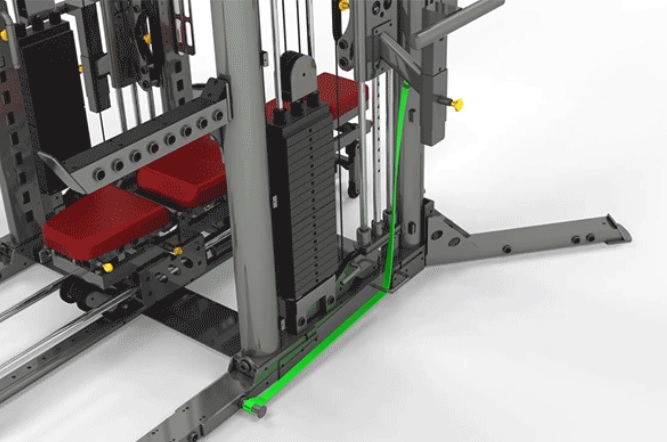Although we designed the X9 Hybrid Gym to compete with all products in the premium strength training category the Titan sometimes gets singled out for comparison due to a few similarities. Dollar for dollar we beat the Titan products in virtually every category. Function, design, efficiency, quality, metal gauge, removable bench, walk through design (Titan has a heavy carriage system with cross-section as well as metal tubing permanently bolted right where you would walk in the middle of the machine), selectorized weight stacks (not found on the Titan), articulating 2D and 3D cable arms in the high position and 180 Arc Cable Arms in the low position found only on the X9. The Titan has two fixed cable arms up high and two fixed pulleys in the low position. The Titan does not have the ability to move the low pulleys from narrow to wide or high to low, which is a valuable function.
We believe a workout on the X9 is more seamless, requiring less time routing cables, etc. Although we do use some manual cable segments (ie modular pec deck, leg press resistance multiplier, leg developer and carriage bridge/tethering), the core cable system is always connected and ready to go…you can always walk up, select your weight and start exercising. Not so with the Titan. Our footplates and multi-function pad have angle adjustments. The Titan does not.
The Titan Pec Deck resistance curve- heavy start easy finish, is opposite from that desired. The X9 resistance curve is consistent. The list could go on. While the Titan is a decent machine overall, it is no match for the X9. Lastly, the Titan styling, in our humble opinion, looks dated. We feel the custom D-shape tubing and design of the X9 is cutting edge and leads the pack in the looks department. The X9 will not go out of style anytime soon. Note: we will be creating a comparison table measuring the X9 against 20+ of the most popular premium strength machines on the market. Keep checking back for more info.






